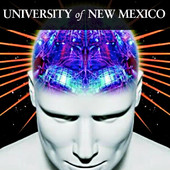(What happened to February?)
Transcranial Direct Current Stimulation (tDCS) of the visual cortex: a proof-of-concept study based on interictal electrophysiological abnormalities in migraine (pdf)
with anodal tDCS turned out to be beneficial in MoA (migraine without aura patients) migraine attack frequency, migraine days, attack duration and acute medication intake significantly decreased during the treatment period compared to pre-treatment baseline
Tags: Migraine, visual cortex,
The Mental Cost of Cognitive Enhancement (pdf)
Stimulation to the the posterior parietal cortex facilitated numerical learning, whereas automaticity for the learned material was impaired. In contrast, stimulation to the dorsolateral prefrontal cortex impaired the learning process, whereas automaticity for the learned material was enhanced.
Wired Version
New Scientist Version
Tags: Roi Cohen Kadosh,
Keith Spalding’s Simple DIY TDCS circuit using CRDs
A DIY schematic for tDCS using CRDs for current regulation.
Tags: DIY, CRD
Noninvasive transcranial direct current stimulation over the left prefrontal cortex facilitates cognitive flexibility in tool use
…we hypothesized that cathodal (inhibitory) transcranial direct current stimulation (tDCS) will facilitate performance in a flexible use generation task.
The results support the hypothesis that certain tasks may benefit from a state of diminished cognitive control.
Tags: inhibitory benefits,
When Anger Leads to Rumination
Induction of Relative Right Frontal Cortical Activity With Transcranial Direct Current Stimulation Increases Anger-Related Rumination
…results suggest that anger associated with greater relative left frontal cortical activity predicts approach-oriented aggressive action, whereas anger associated with greater relative right frontal cortical activity predicts inhibited rumination.
Potential of transcranial direct current stimulation shown in fibromyalgia
Transcranial direct current stimulation delivered focally to the left primary motor cortex of patients with fibromyalgia significantly reduced perceived pain compared with sham stimulation in a proof-of-principle pilot trial.
Tags, fibromyalgia, pain

 Just found this in iTunesU. Wow! You’ll recognize many of these names if you’re reading the tDCS literature. I’ve only watched the Michael Weisend talks (whom we met
Just found this in iTunesU. Wow! You’ll recognize many of these names if you’re reading the tDCS literature. I’ve only watched the Michael Weisend talks (whom we met